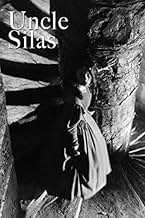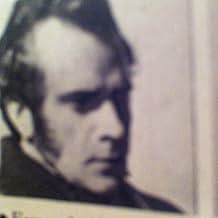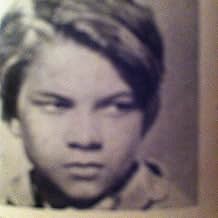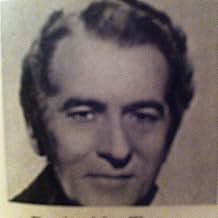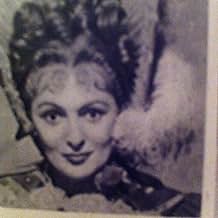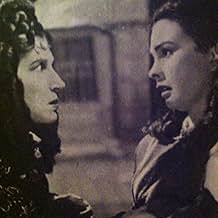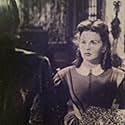Füge eine Handlung in deiner Sprache hinzuFollowing her father's death, a teenage British heiress goes to live with her guardian uncle--who is broke and schemes to murder her for her inheritance.Following her father's death, a teenage British heiress goes to live with her guardian uncle--who is broke and schemes to murder her for her inheritance.Following her father's death, a teenage British heiress goes to live with her guardian uncle--who is broke and schemes to murder her for her inheritance.
- Regie
- Drehbuch
- Hauptbesetzung
Empfohlene Bewertungen
UNCLE SILAS (called THE INHERITANCE upon initial release in the United States) fits well into the 1940s cycle of British adaptations of classic Victorian literature. Think David Lean's Dickens movies or the Alaistair Sims A CHRISTMAS CAROL, films which use gorgeous black and white photography and a blend of realism and melodrama to bring these gothic worlds to life.
Of course, UNCLE SILAS hasn't the literary pedigree of a Dickens' work: it is quite a sensational narrative, as close to the first-wave of gothic novels from the 18th century as Victorian gothic literature gets. For the trouble of being pretty and expecting a fortune when she comes of age, the heroine Caroline is threatened by a series of sinister forces connected with her Uncle Silas, a former rake and current drug addict who needs money badly to pay off his debts. He initially tries to get her to marry his lecherous son, but when Caroline makes it loud and clear that she won't do so, his methods turn ever more cruel and murderous.
UNCLE SILAS nails the gothic mood perfectly, showing the decay of Caroline's sunny adolescence as she loses her father and falls into the hands of evil. There is a wonderful symmetry in this progression-- the film begins with a close-up of the wide-eyed Caroline and ends with a similar close-up, now emphasizing her lost innocence after barely surviving the events of the film. Jean Simmons makes the perfect gothic heroine: beautiful, spunky, and virtuous, all without coming off as cloying or too dumb to live, a rare feat for this sort of story. The music is dramatic and spooky.
So why isn't the film the equal of, say, Lean's GREAT EXPECTATIONS or OLIVER TWIST? Mainly, it has to do with two things: pacing and the villains. I love a good slow burn, especially in creepy fare, but some of the middle section of UNCLE SILAS is too slow for its own good, probably because a few of these scenes lack the sinister presence of the forces pursuing Caroline and her money.
Secondly, the villains of the story are an uneven bunch. The sexually aggressive son and the ghastly governess are both slightly comical in presentation, but manage some level of menace when terrorizing Caroline. The son makes it clear he could physically overpower Caroline without a problem and what his intentions are for her, and the governess has a garish, harsh appearance and witch-like personality which would not feel out of place in a child's nightmare. Unfortunately, Uncle Silas himself is not scary at all. He is at times enjoyably camp and I'll never say no to a good ham-fest, but he's never truly frightening, often acting more like a whiny cartoon villain than the decadent, ruthless beast he is supposed to be.
I think the inconsistent sense of dread and menace is what brings UNCLE SILAS down a few pegs. It's still a good movie and one I would recommend to other classic film fans though, as its virtues outweigh its shortcomings.
Of course, UNCLE SILAS hasn't the literary pedigree of a Dickens' work: it is quite a sensational narrative, as close to the first-wave of gothic novels from the 18th century as Victorian gothic literature gets. For the trouble of being pretty and expecting a fortune when she comes of age, the heroine Caroline is threatened by a series of sinister forces connected with her Uncle Silas, a former rake and current drug addict who needs money badly to pay off his debts. He initially tries to get her to marry his lecherous son, but when Caroline makes it loud and clear that she won't do so, his methods turn ever more cruel and murderous.
UNCLE SILAS nails the gothic mood perfectly, showing the decay of Caroline's sunny adolescence as she loses her father and falls into the hands of evil. There is a wonderful symmetry in this progression-- the film begins with a close-up of the wide-eyed Caroline and ends with a similar close-up, now emphasizing her lost innocence after barely surviving the events of the film. Jean Simmons makes the perfect gothic heroine: beautiful, spunky, and virtuous, all without coming off as cloying or too dumb to live, a rare feat for this sort of story. The music is dramatic and spooky.
So why isn't the film the equal of, say, Lean's GREAT EXPECTATIONS or OLIVER TWIST? Mainly, it has to do with two things: pacing and the villains. I love a good slow burn, especially in creepy fare, but some of the middle section of UNCLE SILAS is too slow for its own good, probably because a few of these scenes lack the sinister presence of the forces pursuing Caroline and her money.
Secondly, the villains of the story are an uneven bunch. The sexually aggressive son and the ghastly governess are both slightly comical in presentation, but manage some level of menace when terrorizing Caroline. The son makes it clear he could physically overpower Caroline without a problem and what his intentions are for her, and the governess has a garish, harsh appearance and witch-like personality which would not feel out of place in a child's nightmare. Unfortunately, Uncle Silas himself is not scary at all. He is at times enjoyably camp and I'll never say no to a good ham-fest, but he's never truly frightening, often acting more like a whiny cartoon villain than the decadent, ruthless beast he is supposed to be.
I think the inconsistent sense of dread and menace is what brings UNCLE SILAS down a few pegs. It's still a good movie and one I would recommend to other classic film fans though, as its virtues outweigh its shortcomings.
Uncle Silas is directed by Charles Frank and adapted to screenplay by Ben Travers from the novel of the same name written by Sheridan Le Fanu. It stars Jean Simmons, Katina Paxinou, Derrick De Marney, Derek Bond, Sophie Stewart and Esmond Knight. Music is by Alan Rawstone and cinematography by Robert Krasker.
Upon the death of her loving father, teenager Caroline Ruthyn (Simmons) is bequeathed the family inheritance when she reaches the age of 21. In the interim she is requested to go live with her Uncle Silas (De Marney) in his ramshackle Gothic mansion. Silas was once considered unbalanced, even getting off with a murder charge when some felt he was guilty as sin, but now he seems warm towards Caroline. Is it a bluff? When Silas' weird son arrives on the scene and her fearsome former governess is found to be haunting the edges of the frames, Caroline suspects she may indeed be in danger.
A film dripping with Gothic delights, Uncle Silas is undeniably dated, as evidenced by the over acting that surrounds the excellent Simmons, but this is no Jamaica Inn. Atmosphere unbound here as Charles Frank and the brilliant Robert Krasker surround the nastiness of the plot with nightmarish visuals and scenes fit to grace any bigger budgeted horror of the decade.
The mansion is a classic fit for such a tale of heiress stalk and kill fare, though it is more run down than the opulence of something like Manderley. With 90% of the picture shot in dark and shadows, where light comes via candles and firesides, the mood of impending peril is always high. Add in a few stormy nights, mysterious rooms, locked gates and characters straight out of one of James Whale's dreams and you are good to go for bodice bedlam.
Director Charles Frank (co-writer The Late Edwina Black) had no career whatsoever, which on this evidence is baffling. OK! He wasn't able to rein in De Marney and Paxinou on this one, though in the case of the latter it's a glorious case where excess fits the nightmarish dream- scape, but some of his visual touches hint at what a good noir style director he could have been. With two nightmare sequences superb, one Brandy inspired and an array of canted angles and shadowy menaced frames filing out the piece, this shows superbly someone able to sustain foreboding atmosphere.
In some sources it is listed that Nigel Huke was co-cinematographer, but on others not so, and I certainly didn't see his name on the credits when the film rolled? But what we can see for sure is Krasker at his best. In the same year as Uncle Silas he would elevate Carol Reed's Odd Man Out to classic cinematography status, and two years later he would of course be an integral part of what made The Third Man the deservingly revered picture it is. Uncle Silas represents something of a must see for Krasker purists. It's also definitely a film that Simmons fans should seek out.
The over acting will irritate some, and the mid-point drags as it goes into gaiety mode and nearly derails the suspenseful mood that has been built up deftly. But it quickly overcomes this and gets back on track to be a cracker waiting to be gorged on by like minded film fans. It would make a nice appetiser to Ealing's brilliant Queen of Spades, or as B support to The Spiral Staircase. It was released as The Inheritance in the States, and had changes made, suffice to say that anyone interested in this movie should see only the British version. Maybe that was where Huke was involved? In the American cut? Oh well, Uncle Silas, Brit version, wonderfully kinked. 8/10
Upon the death of her loving father, teenager Caroline Ruthyn (Simmons) is bequeathed the family inheritance when she reaches the age of 21. In the interim she is requested to go live with her Uncle Silas (De Marney) in his ramshackle Gothic mansion. Silas was once considered unbalanced, even getting off with a murder charge when some felt he was guilty as sin, but now he seems warm towards Caroline. Is it a bluff? When Silas' weird son arrives on the scene and her fearsome former governess is found to be haunting the edges of the frames, Caroline suspects she may indeed be in danger.
A film dripping with Gothic delights, Uncle Silas is undeniably dated, as evidenced by the over acting that surrounds the excellent Simmons, but this is no Jamaica Inn. Atmosphere unbound here as Charles Frank and the brilliant Robert Krasker surround the nastiness of the plot with nightmarish visuals and scenes fit to grace any bigger budgeted horror of the decade.
The mansion is a classic fit for such a tale of heiress stalk and kill fare, though it is more run down than the opulence of something like Manderley. With 90% of the picture shot in dark and shadows, where light comes via candles and firesides, the mood of impending peril is always high. Add in a few stormy nights, mysterious rooms, locked gates and characters straight out of one of James Whale's dreams and you are good to go for bodice bedlam.
Director Charles Frank (co-writer The Late Edwina Black) had no career whatsoever, which on this evidence is baffling. OK! He wasn't able to rein in De Marney and Paxinou on this one, though in the case of the latter it's a glorious case where excess fits the nightmarish dream- scape, but some of his visual touches hint at what a good noir style director he could have been. With two nightmare sequences superb, one Brandy inspired and an array of canted angles and shadowy menaced frames filing out the piece, this shows superbly someone able to sustain foreboding atmosphere.
In some sources it is listed that Nigel Huke was co-cinematographer, but on others not so, and I certainly didn't see his name on the credits when the film rolled? But what we can see for sure is Krasker at his best. In the same year as Uncle Silas he would elevate Carol Reed's Odd Man Out to classic cinematography status, and two years later he would of course be an integral part of what made The Third Man the deservingly revered picture it is. Uncle Silas represents something of a must see for Krasker purists. It's also definitely a film that Simmons fans should seek out.
The over acting will irritate some, and the mid-point drags as it goes into gaiety mode and nearly derails the suspenseful mood that has been built up deftly. But it quickly overcomes this and gets back on track to be a cracker waiting to be gorged on by like minded film fans. It would make a nice appetiser to Ealing's brilliant Queen of Spades, or as B support to The Spiral Staircase. It was released as The Inheritance in the States, and had changes made, suffice to say that anyone interested in this movie should see only the British version. Maybe that was where Huke was involved? In the American cut? Oh well, Uncle Silas, Brit version, wonderfully kinked. 8/10
Sir Hitchcock used to say : the more successful the villain ,the more successful the film .
And "Uncle Silas " got three memorable villains for the price of one. Katina Paxinou appears first as a French teacher ,but her lessons are so terrifying ( you 've got to pronounce "u " properly !say it again " uuuu"!) that her pupil gets nightmares at night ;she sings bizarre songs in French and she takes the ingenue for a promenade .....in the cemetery ...
.......where she meets the second villain(Manning Whiley ) who is none other than her first cousin ,son of sweet uncle Silas ....
.......who is the third baddie (Derrick De Marnay) and lives in a gloomy dark castle , par excellence the Gothic place ,with a roof which can give you the jitters ;uncle Silas is suave ,sly and ,little by little,reveals his true colors :he's the ogre of the fairy tales flash on the bone;
The three actors overplay ,in an outrageous way (mainly Paxinou), turns this Gothic tale into enjoyable grand guignol and combine their efforts to bump off pitiful Jean Simmons and to latch onto her valuable inheritance (hence the alternate title).Jean Simmons ,then at the beginning of a brilliant career ,and who had already a masterpiece under her belt ("black narcissus")
And "Uncle Silas " got three memorable villains for the price of one. Katina Paxinou appears first as a French teacher ,but her lessons are so terrifying ( you 've got to pronounce "u " properly !say it again " uuuu"!) that her pupil gets nightmares at night ;she sings bizarre songs in French and she takes the ingenue for a promenade .....in the cemetery ...
.......where she meets the second villain(Manning Whiley ) who is none other than her first cousin ,son of sweet uncle Silas ....
.......who is the third baddie (Derrick De Marnay) and lives in a gloomy dark castle , par excellence the Gothic place ,with a roof which can give you the jitters ;uncle Silas is suave ,sly and ,little by little,reveals his true colors :he's the ogre of the fairy tales flash on the bone;
The three actors overplay ,in an outrageous way (mainly Paxinou), turns this Gothic tale into enjoyable grand guignol and combine their efforts to bump off pitiful Jean Simmons and to latch onto her valuable inheritance (hence the alternate title).Jean Simmons ,then at the beginning of a brilliant career ,and who had already a masterpiece under her belt ("black narcissus")
I read in other user comments above that several U.S. viewers have only been able to see "Uncle Silas"(1947) in the inferior and censored title of "The Inheritance".Like the original "The Wicked Lady" 1945 which had to be re-shot minus décolletage, this was released at a time in America of great prudery.I am happy to report to my said U.S.brethren that the original U.K. version is available from www.myrarefilms.co.uk for which I paid £5 or about $7 + postage in your currency.In this more liberal climate I hate films being censored, after all, I am 69,so purchase a copy of the original rather than watch an inferior copy.
Jean Simmons was born in 1929 so when asked her age (16) in "Uncle Silas" she is nearly telling her real age of 18 and very young fresh & lovely she looks.Full marks to the set & dress designers to show clothes worn by ladies in 1845.Derek de Marney for once plays a villain as Uncle Silas compared to say "Young & Innocent" (1937) directed by Hitchcock, when he played the hero wrongly accused of murdering a lady associate found strangled on a beach.Other reviewers have adequately explained the plot above but do make an effort to see this film if you like Gothic horror.
Jean Simmons was born in 1929 so when asked her age (16) in "Uncle Silas" she is nearly telling her real age of 18 and very young fresh & lovely she looks.Full marks to the set & dress designers to show clothes worn by ladies in 1845.Derek de Marney for once plays a villain as Uncle Silas compared to say "Young & Innocent" (1937) directed by Hitchcock, when he played the hero wrongly accused of murdering a lady associate found strangled on a beach.Other reviewers have adequately explained the plot above but do make an effort to see this film if you like Gothic horror.
This moody version of Joseph Sheridan Le Fanu's classic Gothic novel is quite simply one of the most accomplished British films of the 1940's.
With cinematography reminiscent of (and rivaling)that seen in David Lean's "Great Expectations," it is a pity that this picture is not better known.
This may accrue from the fact that an American, heavily edited, and re-titled version ("The Inheritance") is the only print in U.S. circulation.
At all costs avoid this butcher job, as the 6 minutes of missing footage are very germane to the story's narrative, mood and imagery.
Jean Simmons is a reminder of yet another lost dramatic staple--a decorous, demure heroine, who speaks in complete sentences with flawless diction. Her lady like deportment combined with her unquestioned loveliness makes her a very sympathetic Lady Caroline. Mr. De Marney is similarly impressive as the sinister, titular character.
But the film belongs to Katina Paxinou as the redoubtable Madame De La Rougierre. I believe Mr. Le Fanu would approve of her performance. In any case, her first appearance, as depicted with her malignant face peering through a rain lashed window pane, is as startling an entrance as one could hope for.
Laurence Irving's art direction is superb, (and some of his sketches for this film are included in Edward Carrick's "Art and Design in the British Film," Dennis Dobson, London) fully realizing, as it does, the stories' atmospheric requirements, and amply demonstrating how superior sound stages are to location shooting.
All told, this picture stands favorably alongside Thorold Dickinson's "Queen of Spades," Terence Young's "Corridor of Mirrors," Anthony Pelissier's "Rocking Horse Winner," Leslie Arliss' "Night Has Eyes," Jacques Tourneur's "Experiment Perilous," and Martin Gabel's "The Lost Moment," as one of a small group of visually distinguished Gothic melodramas of the 1940's, and far superior to the more recent television version, which despite the welcome presence of Peter O'Toole and Barbara Shelley lacks both flavor and mood.
With cinematography reminiscent of (and rivaling)that seen in David Lean's "Great Expectations," it is a pity that this picture is not better known.
This may accrue from the fact that an American, heavily edited, and re-titled version ("The Inheritance") is the only print in U.S. circulation.
At all costs avoid this butcher job, as the 6 minutes of missing footage are very germane to the story's narrative, mood and imagery.
Jean Simmons is a reminder of yet another lost dramatic staple--a decorous, demure heroine, who speaks in complete sentences with flawless diction. Her lady like deportment combined with her unquestioned loveliness makes her a very sympathetic Lady Caroline. Mr. De Marney is similarly impressive as the sinister, titular character.
But the film belongs to Katina Paxinou as the redoubtable Madame De La Rougierre. I believe Mr. Le Fanu would approve of her performance. In any case, her first appearance, as depicted with her malignant face peering through a rain lashed window pane, is as startling an entrance as one could hope for.
Laurence Irving's art direction is superb, (and some of his sketches for this film are included in Edward Carrick's "Art and Design in the British Film," Dennis Dobson, London) fully realizing, as it does, the stories' atmospheric requirements, and amply demonstrating how superior sound stages are to location shooting.
All told, this picture stands favorably alongside Thorold Dickinson's "Queen of Spades," Terence Young's "Corridor of Mirrors," Anthony Pelissier's "Rocking Horse Winner," Leslie Arliss' "Night Has Eyes," Jacques Tourneur's "Experiment Perilous," and Martin Gabel's "The Lost Moment," as one of a small group of visually distinguished Gothic melodramas of the 1940's, and far superior to the more recent television version, which despite the welcome presence of Peter O'Toole and Barbara Shelley lacks both flavor and mood.
Wusstest du schon
- WissenswertesThis film's earliest documented US telecast took place in Los Angeles Monday 3/27/50, leading off Triple Feature Theatre on KECA (Channel 7), hosted by Art Baker.
- PatzerThe length of Jean Simmons' ringlets change from one shot to the other.
- Zitate
Uncle Silas Ruthyn: And here you are! One of my hopes fulfilled.
- Alternative VersionenThe American release, under the title, "The Inheritance" is six minutes shorter than the original British version, titled "Uncle Silas," after the film's source novel.
- VerbindungenVersion of El misterioso tío Sylas (1947)
- SoundtracksMy Hat, It Has Three Corners
(uncredited)
American traditional song
Played in the background during the scene in the London hotel.
Top-Auswahl
Melde dich zum Bewerten an und greife auf die Watchlist für personalisierte Empfehlungen zu.
Details
Box Office
- Budget
- 1.000.000 $ (geschätzt)
- Laufzeit1 Stunde 43 Minuten
- Farbe
- Seitenverhältnis
- 1.37 : 1
Zu dieser Seite beitragen
Bearbeitung vorschlagen oder fehlenden Inhalt hinzufügen

